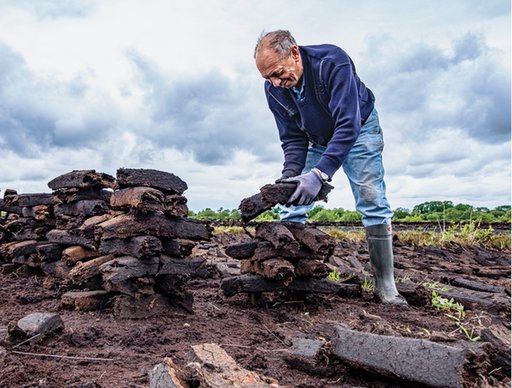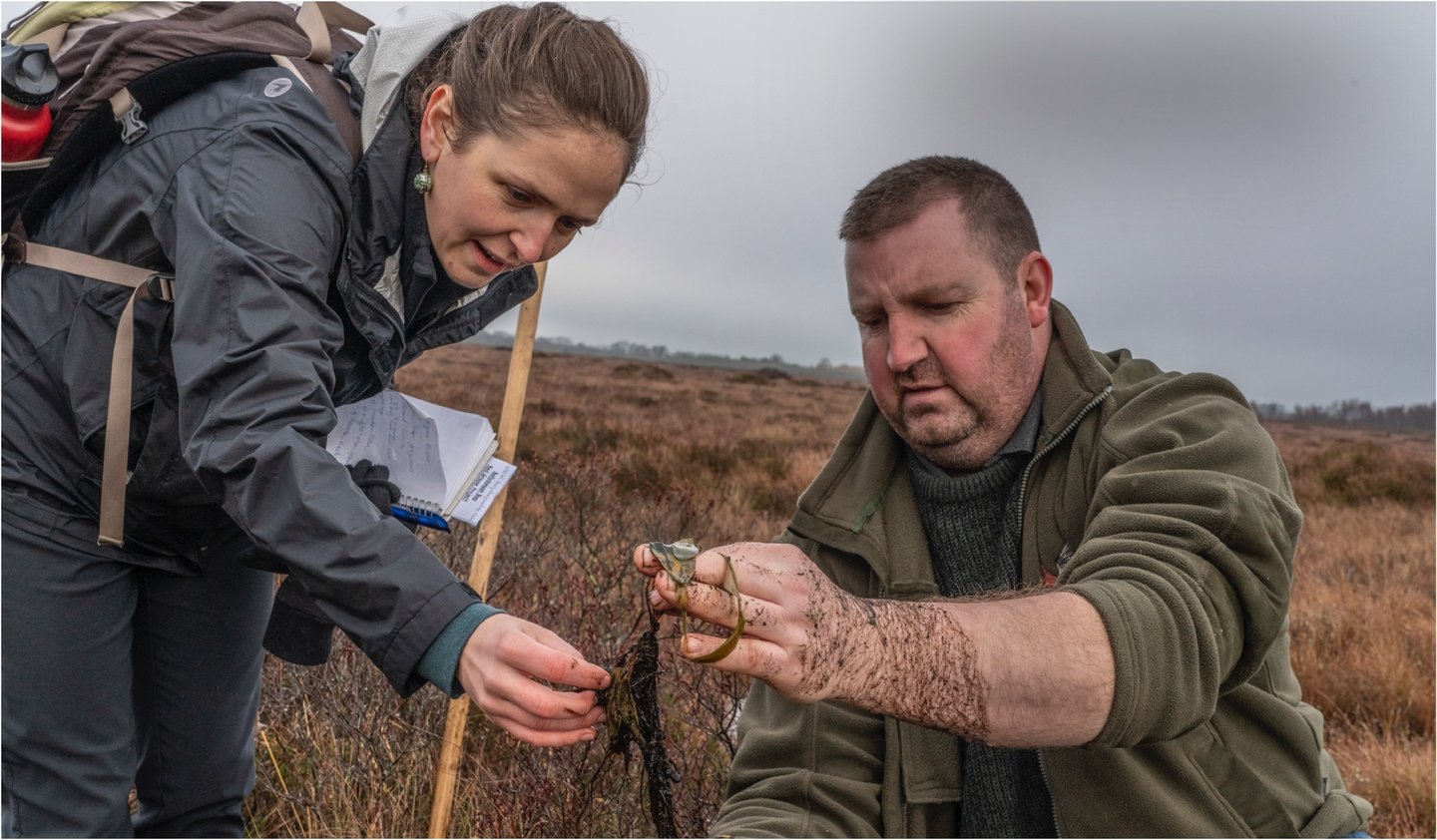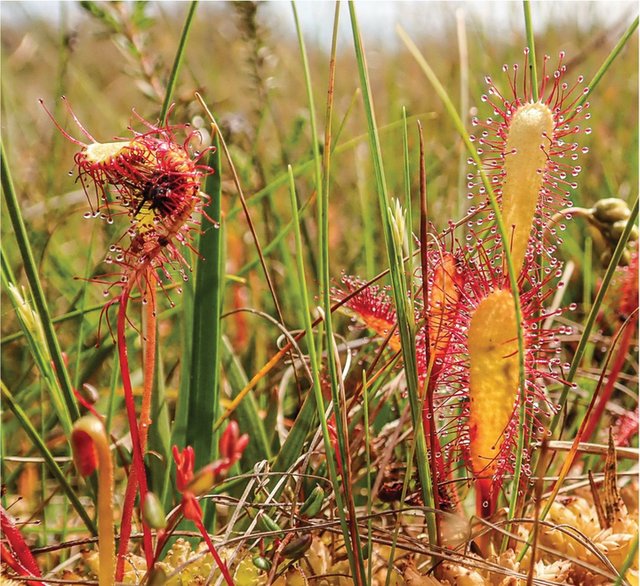
Oncethepeatiscutanddried,itcanbeburnedas fuel.
PowerSource
PeopleinIrelandhaveusedpeatforfuelforcenturies.Familiesusedsimpletoolstocutbrick-shapedblocks.Theylaidthebricksouttodryinthesummersun.Then,peoplecartedthepeathome.Theyburnedthebricksduring winter.
Inthelasthundredyears,largermachinesreplacedsimpletools.Irelandbeganburningmillionsoftonsofpeateachyearinpowerplantstogenerate electricity.
Today,nearlyeightpercentofIrishelectricityisgeneratedbyburningpeat.Andmorethan70,000homesstillburnpeatfor heating.
Burningpeatreleasesthousandsofyearsofstoredcarbonintotheair.Thiscanwarmourplanet.Thenbogsbecomecarbonsources,andnotcarbon sinks.
Peatisafossilfuel,butnotanefficientone.Itisworsethancoalornaturalgasintermsofitscarbon emissions.

Amanstacksbricksofpeatto dry.

SomeIrishhomesarestillwarmedbypeat fires.
Lawsto
ProtectPeat
In2019,theIrishgovernmentmadeaclimateactionplan.Itcalledforreducingcarbonemissions.However,itishardtoaskpeopletochangetheirwayof life.
Peoplewhousepeattoheattheirhomeslovethetradition.Burningsomethingelsejustwouldn’tfeelthesame,saysMaryLeybourneofCloghan, Ireland.
Peatisalsocheap.Somepeoplemightstruggletopayforothertypesoffuel,likeoil.Changemaybedifficult.ButIrelandwantstoreduceitspeatlandcarbonemissions.So,theywillneedtochangethewaytheyusetheir bogs.

Alocallandownerhelpsmetoidentifybog plants.

Insect-eatingsundewplantsthriveina bog.
AFutureforBogs
InIreland,bothturfcuttersandconservationistsfeelstronglyconnectedtothewetlands.
Turf-cutterswanttousepeat.Conservationistswanttopreserve it.
InCloughjordan,Ireland,peatuserAlbertAustinhascutScohaboyBogfordecades.Hehadmanyfondmemoriesofusinghispeat.Whenhewasaskedtostop,itwasabigchangefor him.
Intheend,hedecidedtosellhissectionofthebogtoagovernmentconservationprogram.Inthatway,itcouldbepreserved.Heisproudthathiscommunitywillhaveabogthatthenextgenerationcanenjoy, too.
ScohaboyBoghasnowtransitionedfromasiteofpeatharvestingandforestrytoarecoveringwetland!TheseconversationscontinuealloverIreland,aspeopleworktoprotecttheirwetlands,bogby bog.